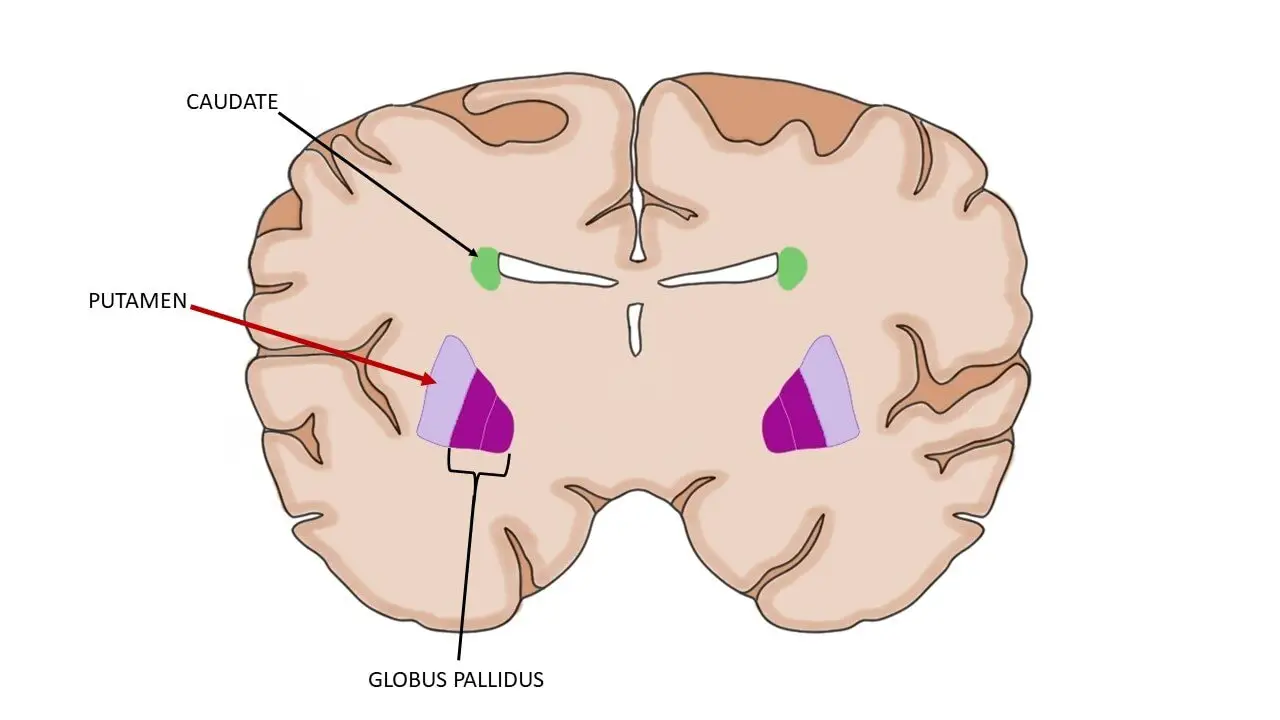Know Your Brain: Putamen
Where is the putamen?

The putamen is a subcortical structure that is part of a group of structures known as the basal ganglia. It is also a component of the dorsal striatum, which includes the putamen and the caudate nucleus. The putamen is adjacent to the globus pallidus, and the putamen and globus pallidus together are sometimes referred to as the lentiform or lenticular nucleus.
What is the putamen and what does it do?
As a component of the basal ganglia, the putamen is best known for its role in facilitating movement. To understand the putamen’s role in movement, it’s helpful to think about how the basal ganglia as a whole may contribute to movement. While this has not been determined definitively, one popular hypothesis suggests that the basal ganglia are important for facilitating desired movements while at the same time inhibiting unwanted and/or competing movements. To read more about the basal ganglia and this purported function, see this article.
The putamen (and striatum as a whole) is thought to act as a critical input area for the basal ganglia. In other words, to accomplish their movement-related functions, the basal ganglia need to receive information from the cerebral cortex about movements that you want to make. Much of this information travels first to the putamen or the caudate via a pathway called the corticostriatal pathway.
Most of the neurons in the putamen contain the neurotransmitter GABA and extend out of the putamen to other regions of the basal ganglia— specifically the globus pallidus and the substantia nigra. These neurons that leave the putamen create pathways that are thought to be involved in either the facilitation or inhibition of movements (depending on the pathway). Research suggests that neurons in the putamen are activated before and during movement—especially movement of the limbs and torso. It is thought that the firing of these putamen neurons contributes not only to the initiation of a movement, but also to the decision to make a movement and the selection of a movement to make.
For years, the putamen was considered to be primarily devoted to movement. But more recent research has begun to point to an expanded role for the putamen. For example, it is now thought that that the putamen is also involved with learning and memory, language, and emotion.
Dysfunction in the putamen could be a factor in a number of disorders, but is strongly linked to problems with motor function. Huntington’s disease (HD), for example—which is characterized by rapid and spasmodic involuntary movements—is associated with the degeneration and death of neurons in the caudate and putamen. These neurons may be involved with the inhibition of unwanted movements, and their degeneration in HD may cause involuntary movement to be more difficult to suppress.
Neurodegeneration in the basal ganglia is also the hallmark pathological sign of Parkinson’s disease (PD), a condition that causes slow, labored movement along with tremors (among other symptoms). With PD, the neurodegeneration occurs primarily in the substantia nigra, but other areas of the basal ganglia—like the putamen—are also affected. Additionally, abnormalities in dopamine function in the putamen are thought to contribute to the movement problems PD patients experience.
References (in addition to linked text above):
Mink JW. The basal ganglia: focused selection and inhibition of competing motor programs. Prog Neurobiol. 1996 Nov;50(4):381-425.
Purves D, Augustine GJ, Fitzpatrick D, Hall WC, Lamantia AS, Mooney RD, Platt ML, White LE, eds. Neuroscience. 6th ed. New York. Sinauer Associates; 2018.


